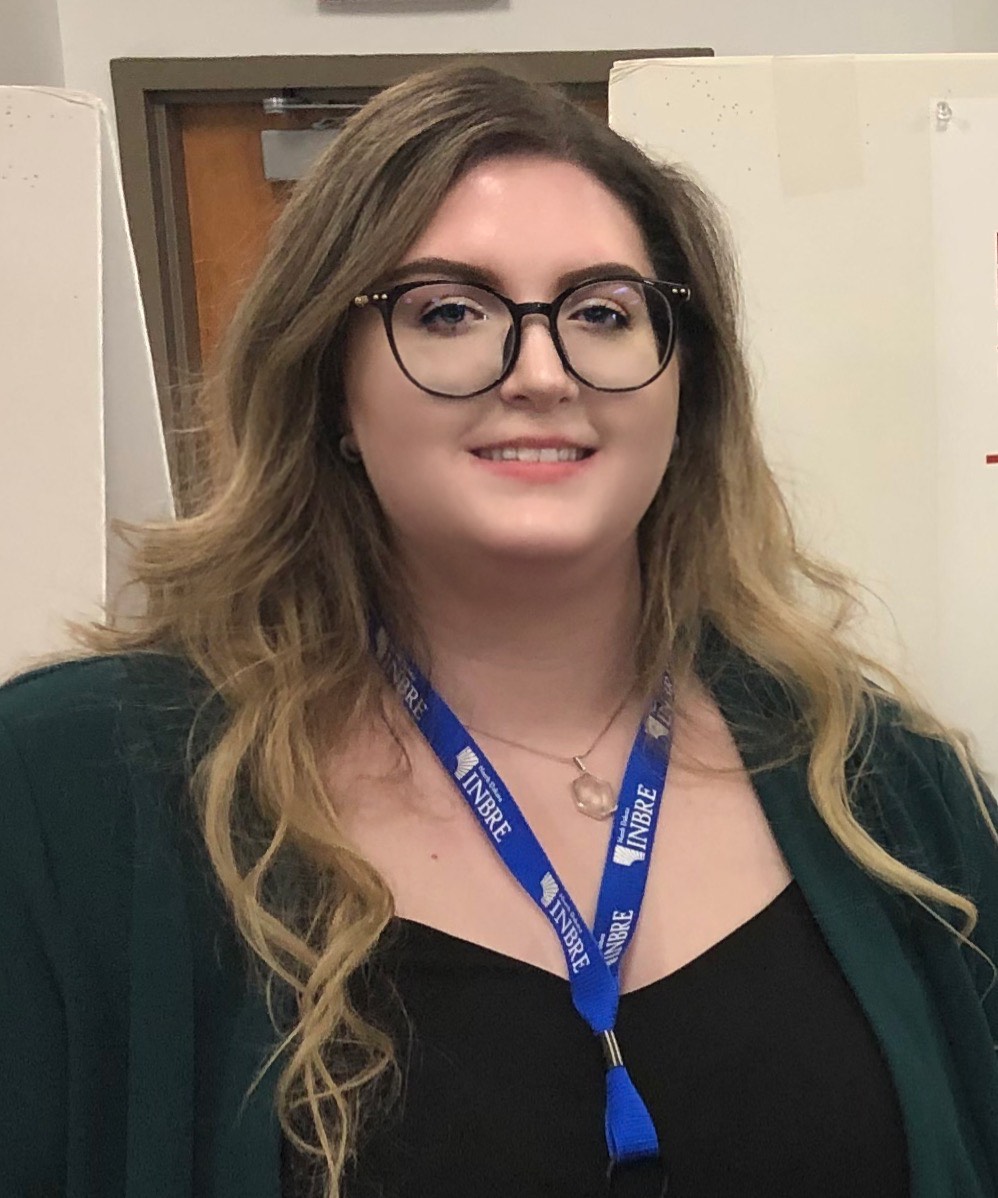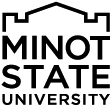Alexandria Hamm presents at virtual Posters on the Hill

By Amanda Duchsherer
Digital Communication Specialist
amanda.duchsherer@minotstateu.edu
MINOT, N.D. – For the first time in its 24-year history, Posters on the Hill wasn’t held on Capitol Hill.
Instead, the event, an annual undergraduate poster session hosted by the Council on Undergraduate Research, was held online on April 21.
“While I wholeheartedly understand why it had to be displaced, I was initially quite upset that the event could not take place as expected since I’d been looking forward to it,” said Alexandria Hamm, Minot State biology major and Posters on the Hill participant. “When it was announced that the format moved to a digital meeting, I was glad that it was at least still happening. The transition was a bit rough since my research advisor, Dr. Bobylev (Minot State chemistry professor Mikhail Bobylev), had only experienced the in-person format, but it worked out in the end. I’m thankful we were still able to share our research.”
Hamm was able to share her poster, An Improved Method of Synthesis of a Key Precursor for Multitarget Drugs Against Alzheimer’s Disease, converse with funding organizations that made the research possible, and take the time to look at everyone else’s work during the virtual event.
“I think that the ability for my fellow undergraduate participants to converse with each other was interesting,” she said. “Normally, for poster sessions, you can’t really communicate with everyone at the event. In this case, we were all able to look at each other’s work at our own pace.”
Hamm and Bobylev spent the past two and a half years in Bobylev’s lab at Minot State working on a new chemical procedure that could be used in the synthesis of various medicinally active compounds. A year ago, they discovered that they could use their procedure to make a starting material for a new class of Alzheimer’s disease medications. Their focus shifted to the synthesis of N-ethyl-N-(2-methoxybenzyl)amine via N-ethyl-N-(2-methoxybenzyl)formamide, resulting in Hamm’s poster.
“We study how compounds in certain medicines can be synthesized. Sometimes we study a specific chemical reaction and then, if the reactions can provide some improvement in the synthesis of a known compound or a known or prospective medicine, then we actually study that specific reaction as it applies to that specific medicine,” Bobylev said. “Then we present the results, showing that our procedure can improve the process of making those medicines.”
In addition to sharing research, Posters on the Hill also serves as an opportunity for universities to show how funding agency dollars are being spent in their labs.
The North Dakota IDeA Network of Biomedical Research Excellence (ND INBRE), National Institute of Health, and the North Dakota Established Program to Stimulate Competitive Research (ND EPSCoR), National Science Foundation, provided funds for the duo’s work.
“In the past, we met in the morning with senators, congressmen, and their staff, which is important because they have staff for the support of science and the support of education. Then, in the evening when the actual Posters on the Hill session happens, a lot of high-ranking people come,” Bobylev said. “It’s a high-visibility event. People from the senators and congressmen offices, funding agencies, and major professional societies talk to all the students and see what the students are doing. It provides a lot of really good opportunities to create contacts and present science and education from North Dakota and our university. Every time we go, we become more visible.”
Hamm became the ninth individual from Bobylev’s lab at Minot State since 2008 to be chosen for the prestigious event, including the third-straight year following Jordan Torgunrud in 2018 and Tess Skinner in 2019. Approximately 400 applications from around the United States were submitted, and only 60 were selected. She was the only student chosen from North Dakota.
The Minot native credits the University’s size to her success.
“The best part of Minot State University is the community that forms here. Being a smaller university means smaller class sizes and more comradery within academic programs,” Hamm, who is also minoring in chemistry and French, said. “I also love that the smaller size of the University makes it possible for me to do undergraduate research for several years. At other universities, that would not be possible.
“For me, my research is the pinnacle of my undergraduate work so I’m incredibly thankful for the opportunities that Dr. Bobylev and Minot State University have given me in my endeavors.”
Bobylev’s requirement that his students give at least four presentations a year gave Hamm the opportunity to present her award-winning work several times.
“Posters on the Hill is the highest achievement, but the way we work with the students in our lab, I actually request they prepare a presentation after each piece of work they complete. They present at the local meeting and then at the state level, and then the regional level before the national level,” Bobylev said. “Each year, we present our research results at the spring annual national meeting of the American Chemical Society (ACS), the largest professional society in the world. Incidentally, Alexandria Hamm is the president of ACS Student Chapter at Minot State University.”
Bobylev and six of his students were scheduled to present at the ACS meeting this spring as well; however, the meeting was cancelled three weeks before its scheduled March date in Philadelphia for the first time in its 144-year history.
“Alexandria had been presenting different parts of her work at different levels starting from her very first year. Last fall, Alexandria presented her work as an oral presentation at the regional meeting in Moorhead, Minnesota and she won first place there. It was not just an experience of presenting, but an experience of winning an award for her presentation,” Bobylev said. “She was selected for Posters on the Hill, she won at the regional meeting, and a year ago she won first place for her poster presentation here at Minot State.
“That shows you what kind of student she is.”
The combination of lab work and presenting experience has Hamm excited for the fall.
“I’ve been accepted into North Dakota State’s Ph.D. program in biochemistry,” she said. “That program is a perfect balance of all of my favorite parts of my undergraduate degree, and I look forward to furthering my education at another institution while remaining in North Dakota.”
About Minot State University
Minot State University is a public university dedicated to excellence in education, scholarship, and community engagement achieved through
rigorous academic experiences, active learning environments, commitment to public service, and a vibrant campus life.
Published: 05/05/20




